Analysis of Carbohydrate Digestion: A Biochemistry Assignment
VerifiedAdded on 2022/09/06
|5
|1015
|20
Homework Assignment
AI Summary
This biochemistry assignment explores the process of carbohydrate digestion through a practical experiment involving chewing bread and observing changes in taste. The student's response explains the role of salivary amylase in breaking down starch into simpler sugars, making the bread taste sweet over time. The assignment further details the digestive process, including the breakdown of carbohydrates into monosaccharides, their absorption, and utilization for energy. It also discusses the various enzymes involved, such as amylase, sucrase, maltase, and lactase, and the different forms of carbohydrates like glucose, fructose, and galactose. The assignment also explains how carbohydrates provide energy, and their conversion to glucose for body use. The student provides detailed explanations, references and analysis of the digestive system and the enzymes that help in the digestion of carbohydrates. This assignment provides a comprehensive understanding of the biochemical processes involved in carbohydrate digestion.
1 out of 5
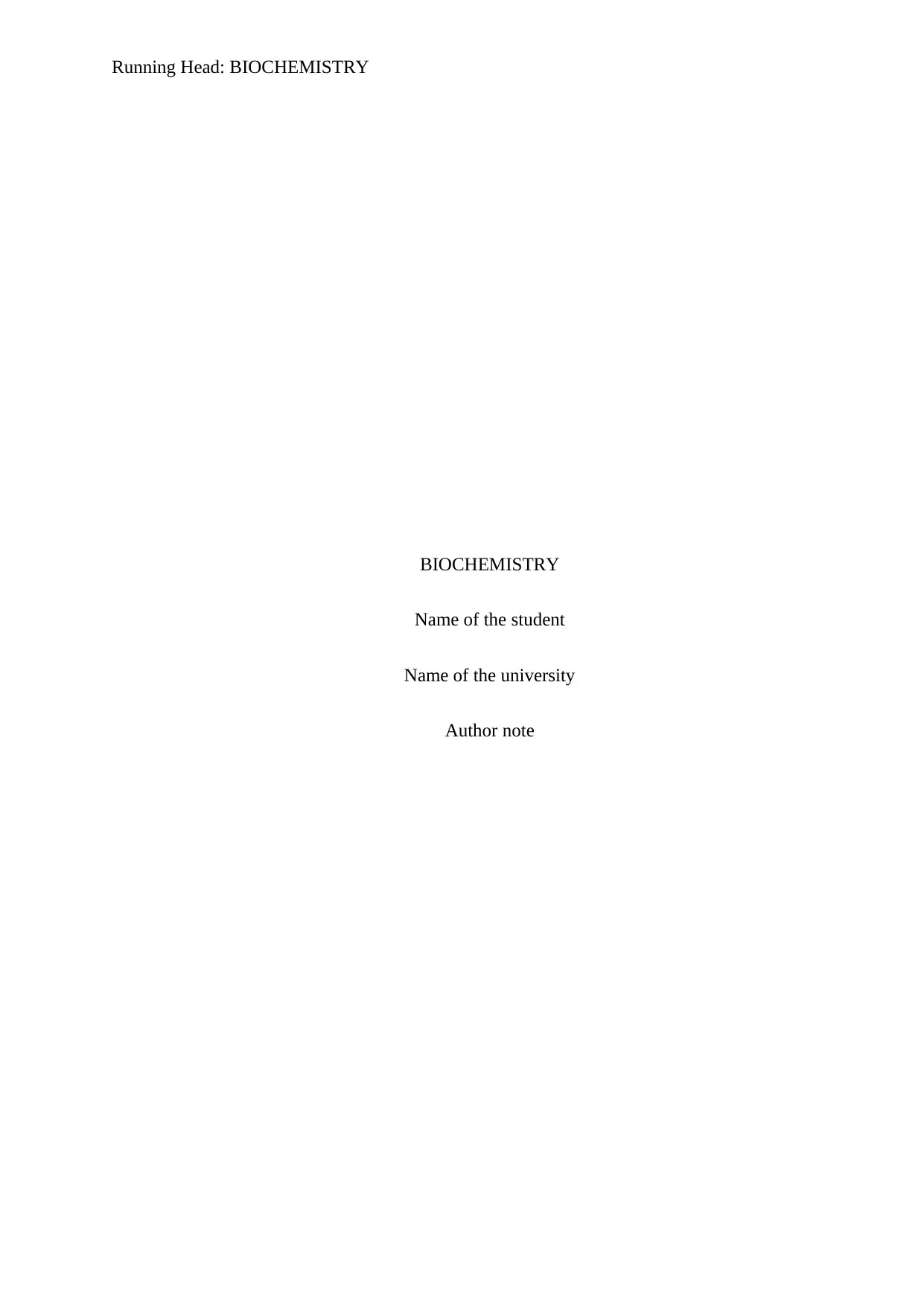
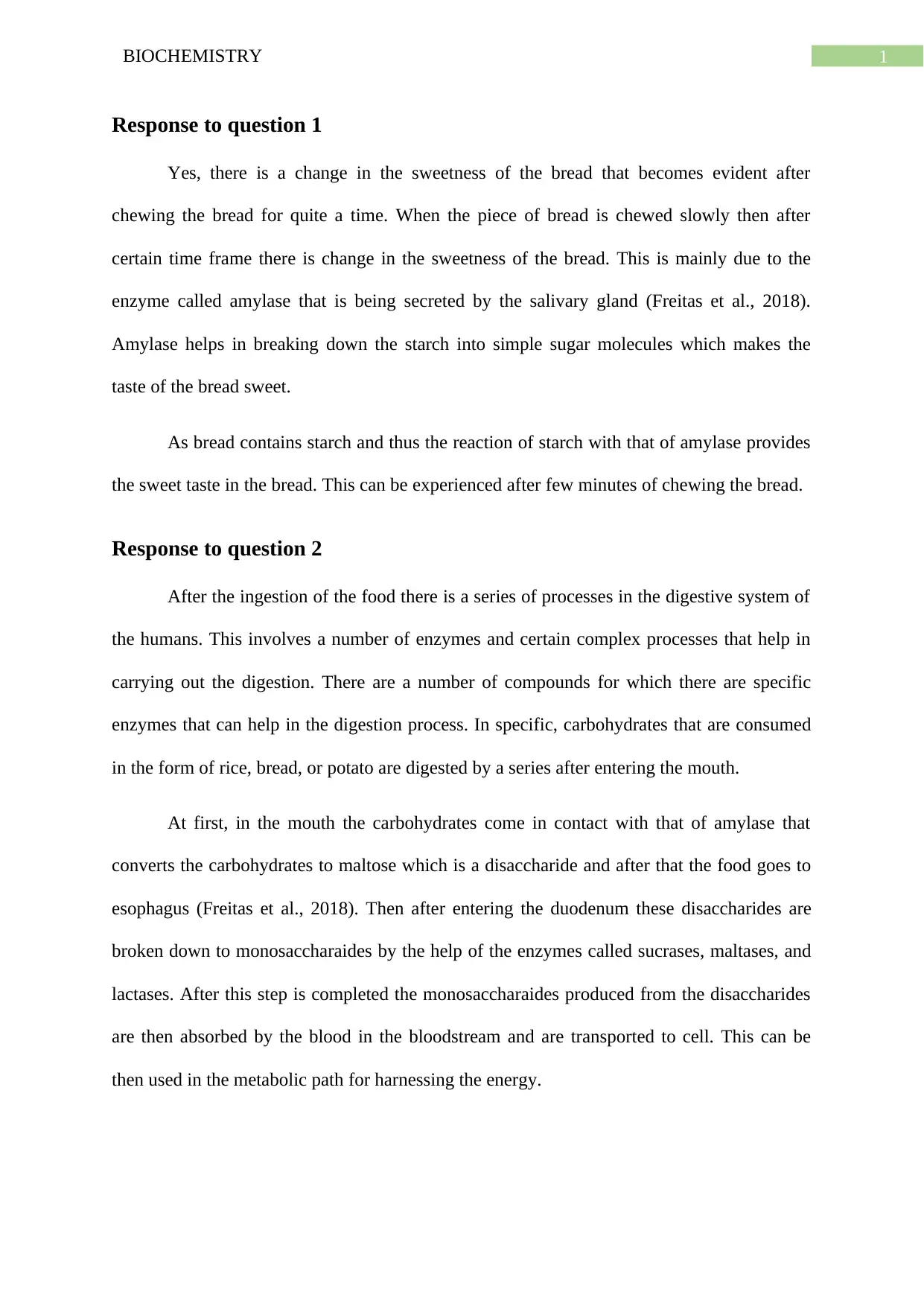
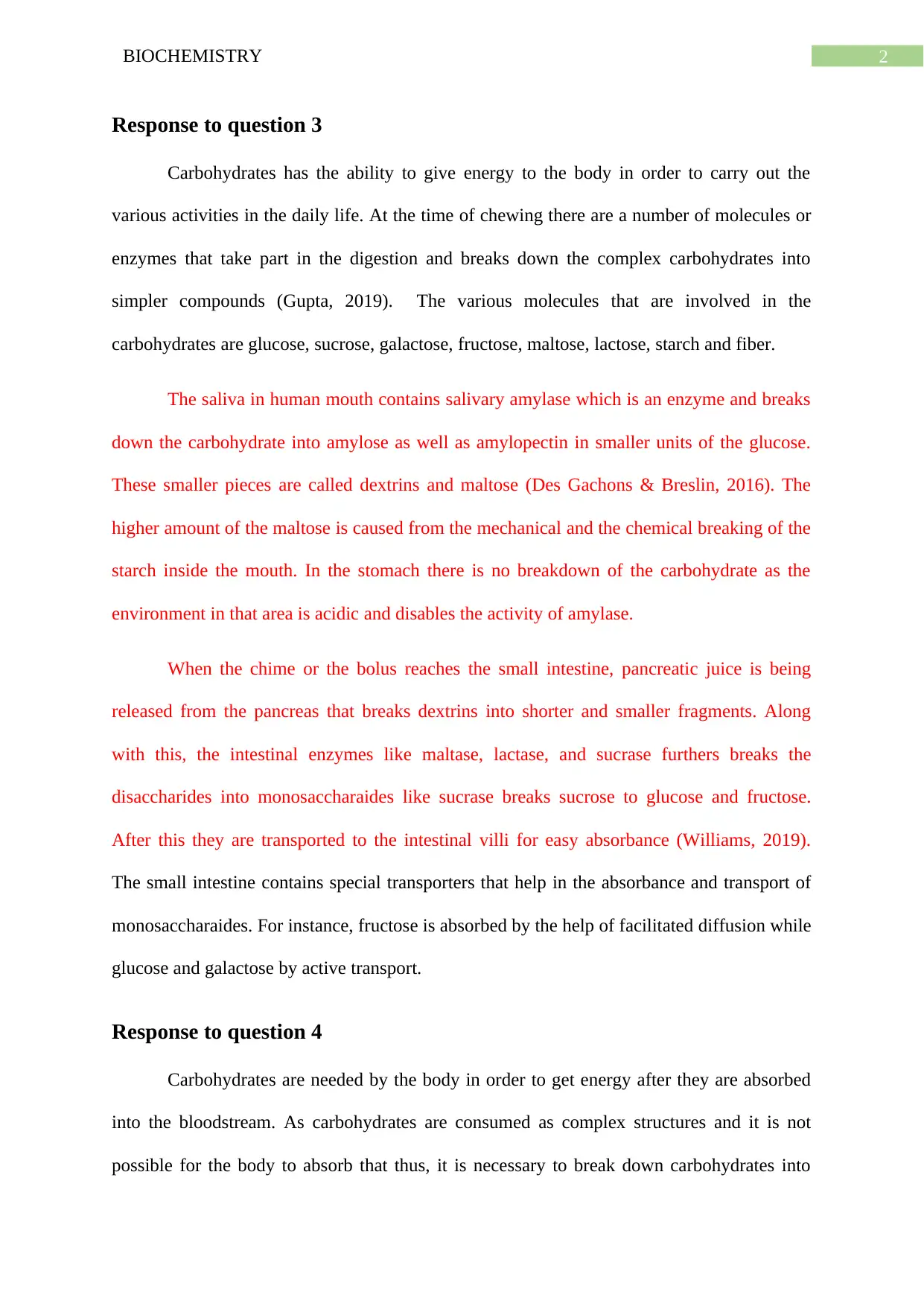

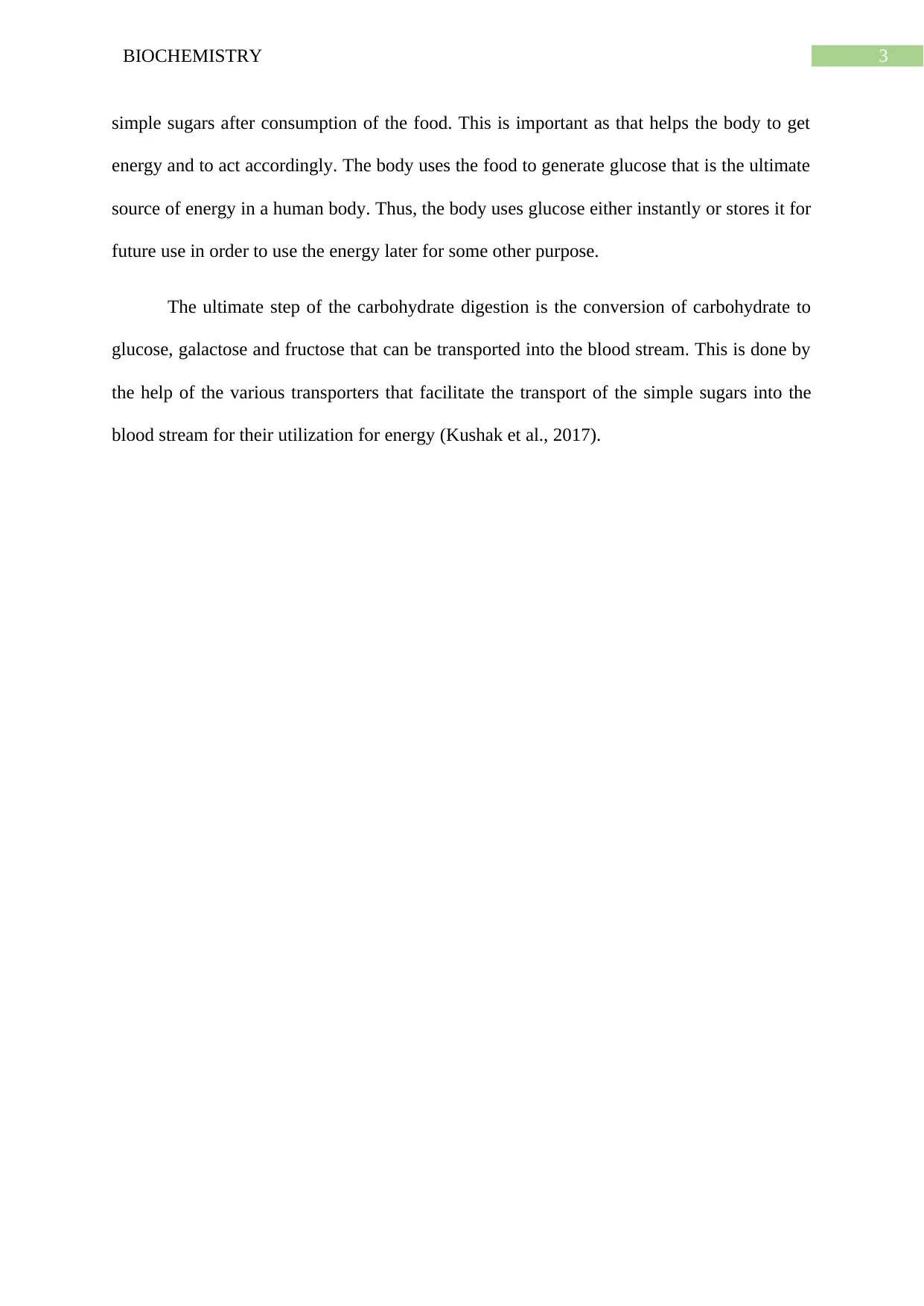
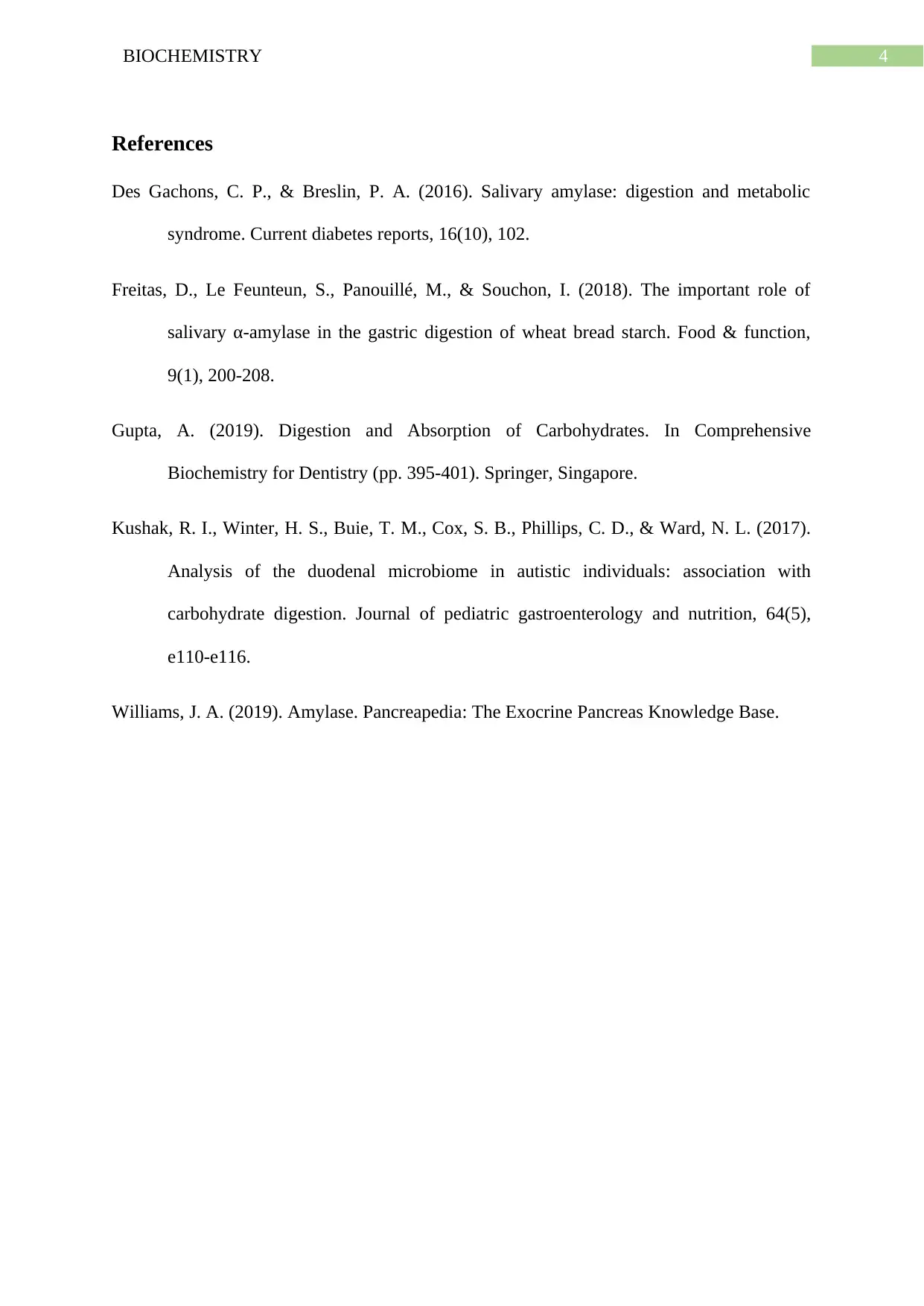






![[object Object]](/_next/static/media/star-bottom.7253800d.svg)